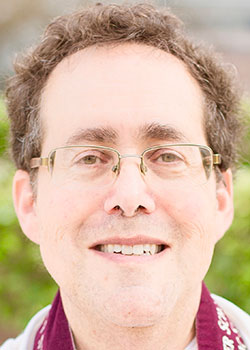One of the sad realities of life in the suburbs is that every neighborhood looks just like every other neighborhood: If it's not a home, it's a mall. If it's not a mall, it's a shopping center. Everything we build in the burbs is beautiful, clean, and lacking personality. Spatial distinctions, where one city ends and the next one begins, are visible only on maps or signs, because, frankly, they all look alike. The same malls, homes, developments, and roads impose a deadening sameness over the vast tracts of American space.
Perhaps it is no coincidence, then, that ours is one of the most secular civilizations in the world's history, and ours is least capable of creating permanent landmarks of any significance. All of our space is homogeneous. If South Coast Plaza burnt down (God forbid) it's difficult to think that the world would feel impoverished.
The late scholar of religion, Professor Mircea Eliade, pointed out that the power to make space special, the power to distinguish one place from another, is the unique ability of religion. Once a place becomes a holy place, it remains so forever--stretching across generations, a symbol of something eternal and sacred--thus Jerusalem has been a sacred place for all three monotheistic religions, just as it was for the pagan religions that preceded Judaism.
Today's Torah portion speaks of Har ha-Hor, Mount Hor, on which Aaron was buried after his death.
Don't forget that Aaron was the symbol of the most sacred institution in all of Israel. The first Kohen Gadol (High Priest), Aaron mediated between God and the people, allowing them to live in conformity with the laws of the Torah and the will of God. When Aaron died, and after he was buried on Mt. Hor, his sanctity lent a permanent sanctity to the mountain that was his final resting place.
Midrash Ba-Midbar Rabbah expounds on this new significance through the use of a pun. The Hebrew word for mountain is "har", so that Har ha-Hor can be read as Mountain-the-Mountain. This peculiar phrase led the Midrash to explain, that Mt. Hor "was a mountain on top of a mountain, like a small apple perched on top of a big one."
The Midrash then explained in its own words, Eliade's insight about sacred space as distinctive and secular space as homogeneous: "Although a cloud went before them, lowering the high places and raising the low, the Holy Blessing One left this mountain as a specimen, that people might know what miracles the Holy Blessing One wrought for them. God left no mountain in the wilderness, that they might not grow fatigued in climbing up and down. Moreover, although the cloud made the whole wilderness perfectly level, it used to leave an elevated spot where the tabernacle might rest and it allowed three mountains to remain: Mount Sinai for the Divine Presence, Mount Nebo for the burial of Moses, and Mount Hor for the burial of Aaron."
Wandering through the wilderness was 40 years--a long period of time by any human measure. Yet the midrash points out that the only meaningful difference in space resulted from the religious incidents that occurred there: No religious significance, no lasting identity. Out of the entire wilderness, the only three significant places were Mt. Sinai, Mt. Nebo, and Mt. Hor.
Events of transcendent power, moments of shining illumination, flashes when God and humanity meet, change the landscape forever. Without those breakthroughs, the road we travel remains hopelessly dull. With faith and with the teachings of Torah, the road is smoothed and our landmarks - our values, our deeds, and our identity - soar above the ravages of time.
The monuments that last are erected by the spirit.
Shabbat shalom.

